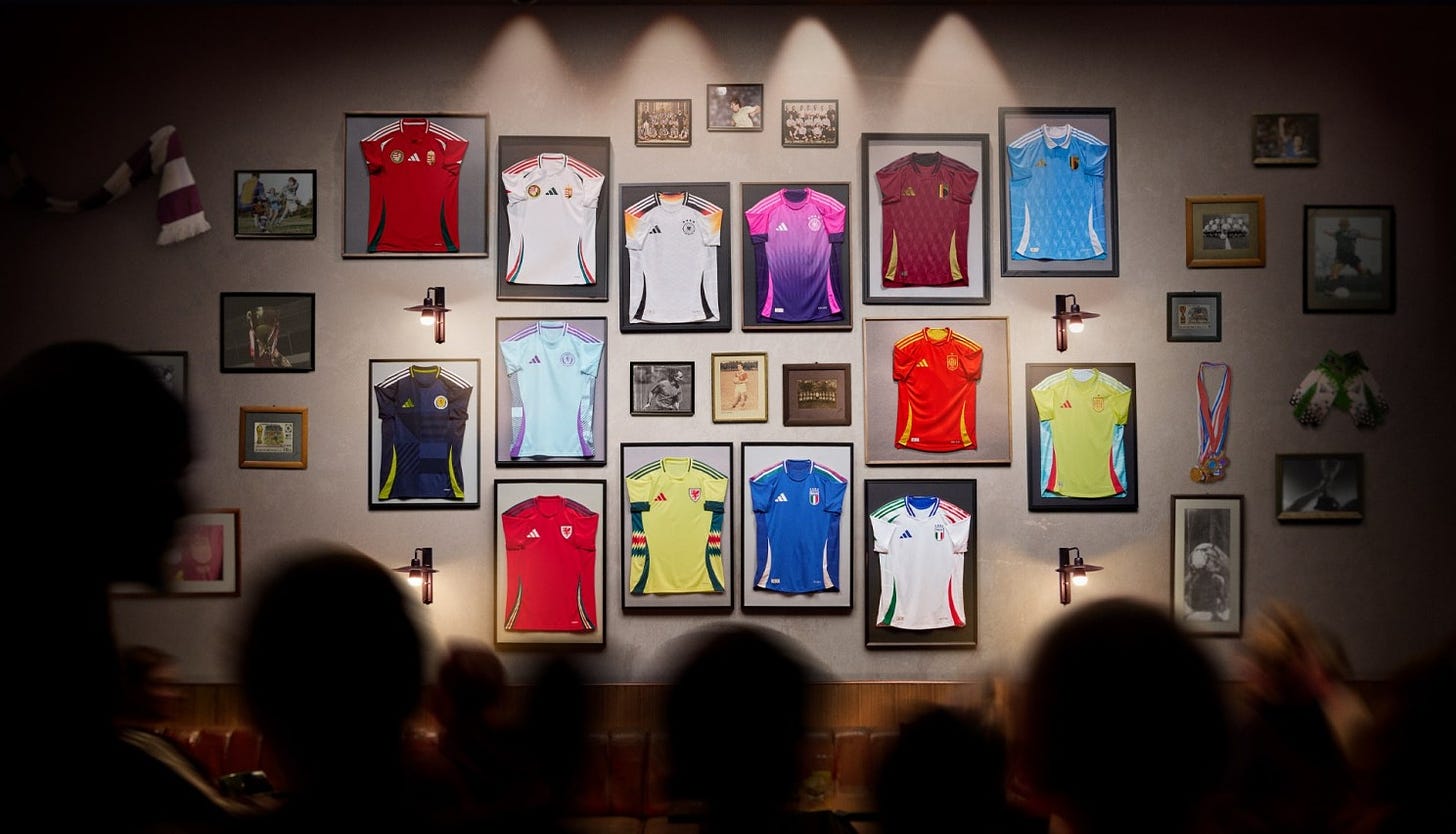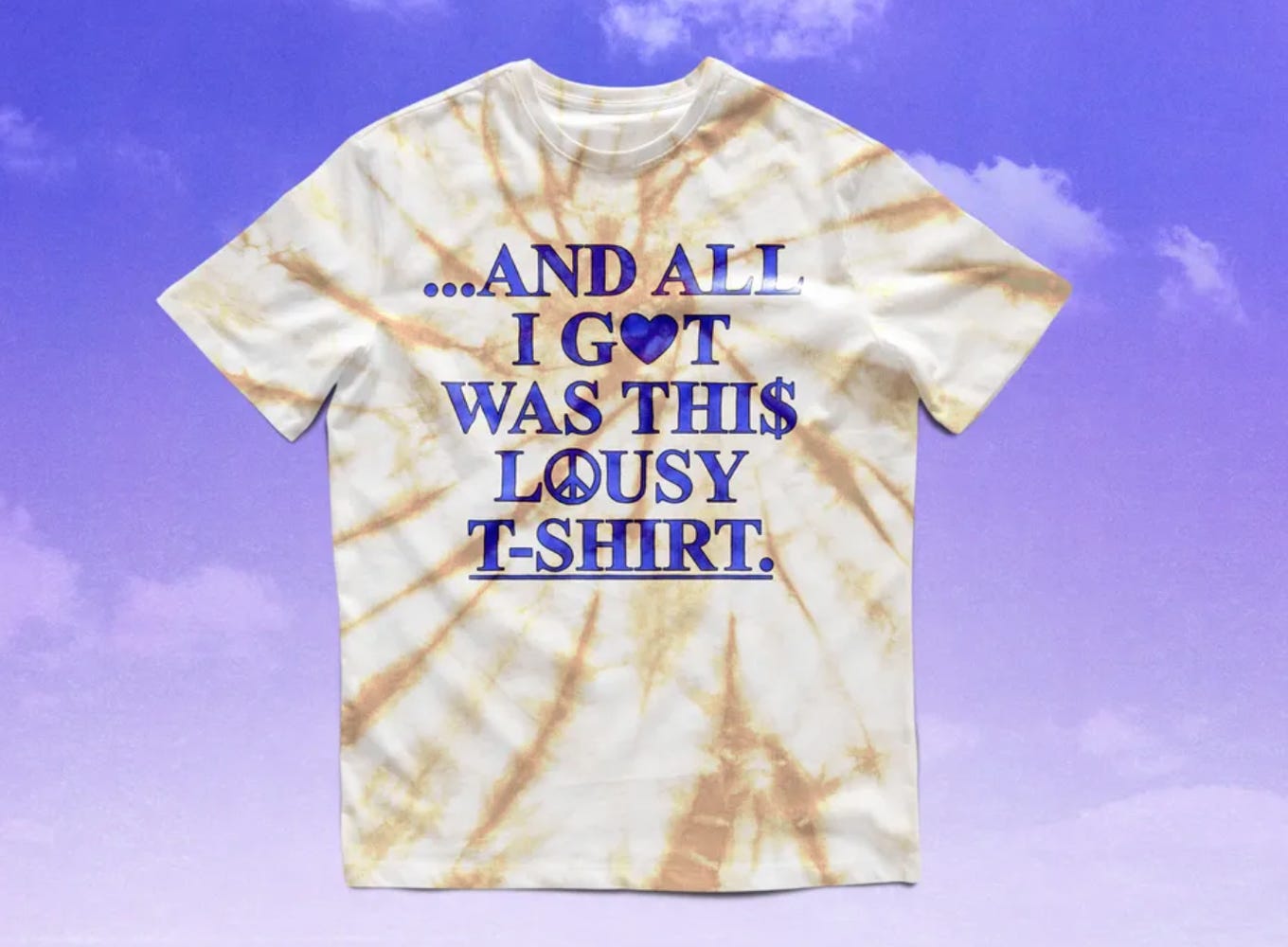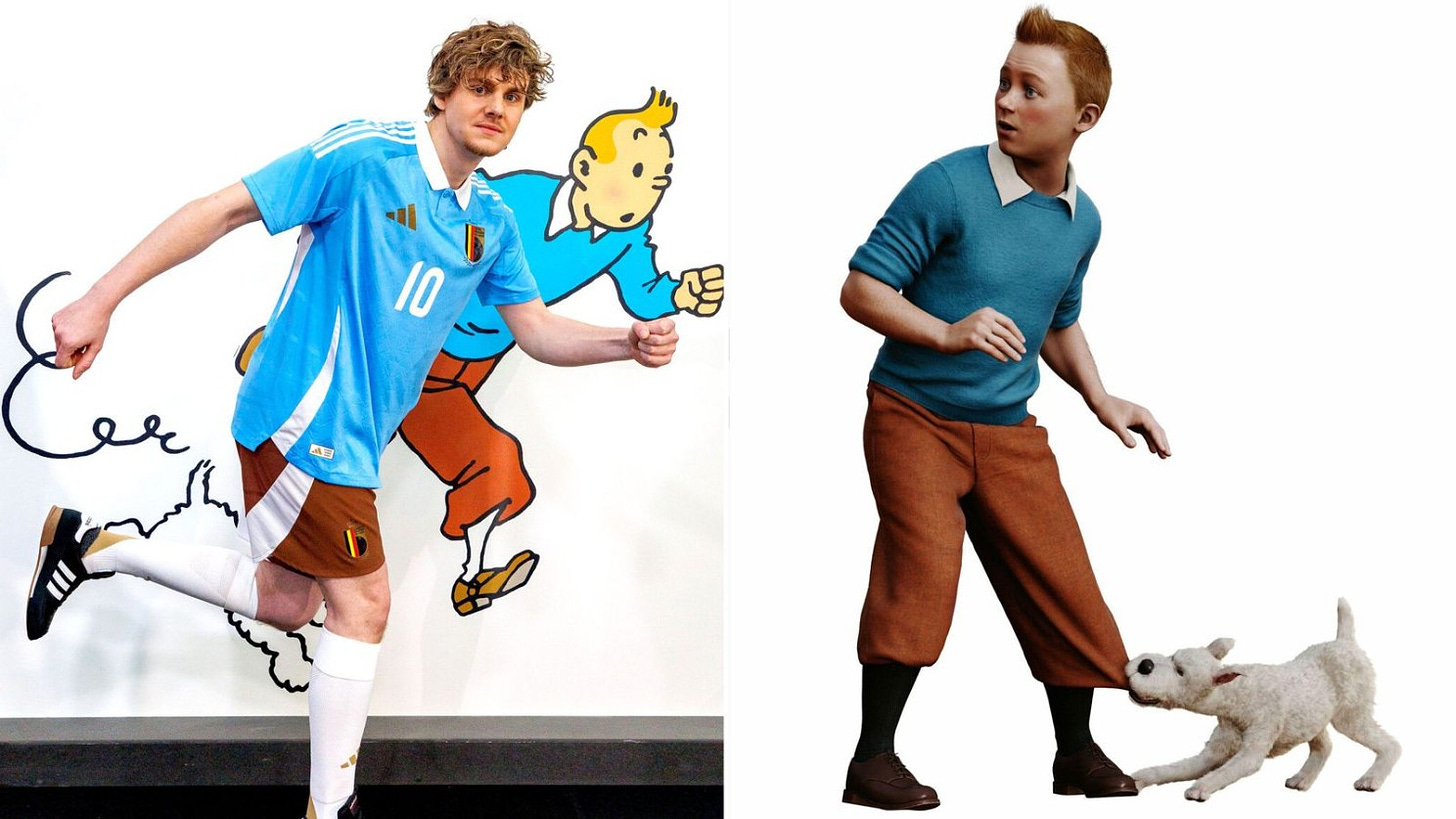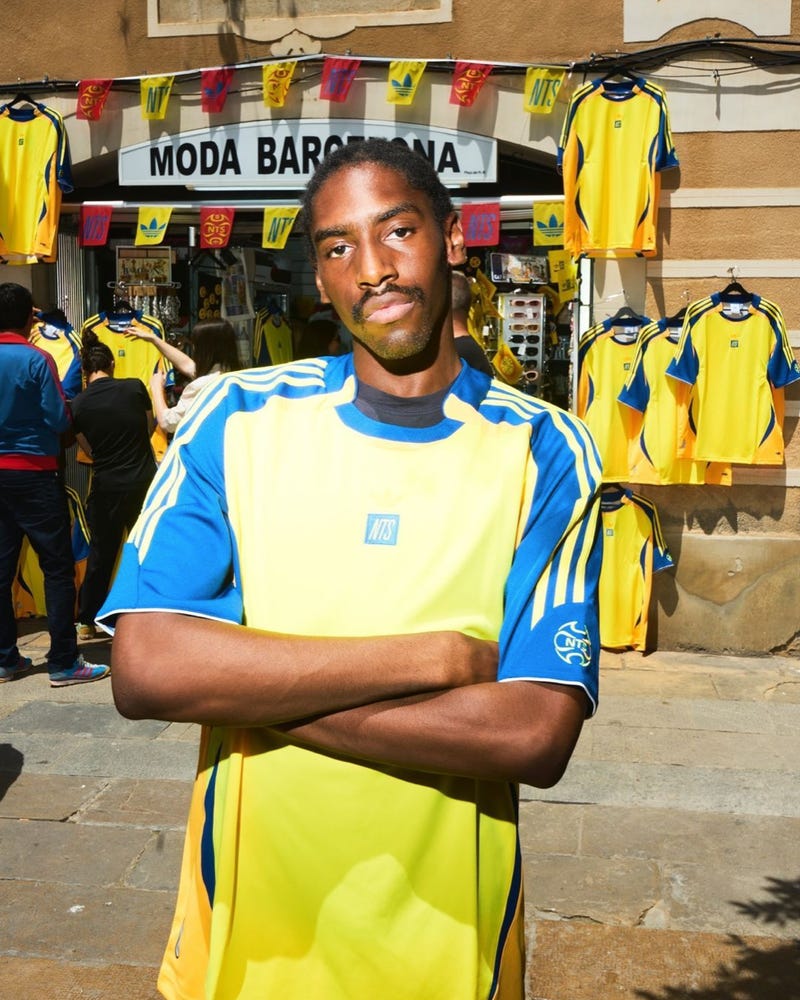Despite not being massive on footy myself, every other summer during the Euros or World Cup I do find myself in a pub garden with a cold white wine in hand, shrieking madly as England miss yet another open goal (eek! still holding out hope). There’s something incredible about how these tournaments can bring people together, both die-hard fans and casual enjoyers, especially during a time of uncomfortable and shifting ideas of what it means to be patriotic or connected as a nation. One aspect that especially captured my attention, perhaps amidst changing views on what is trendy and stylish, is the kits. Merch has always been a factor in the Euros (and World Cup, or any major sporting event), but as merch as a concept begins to shift, we're seeing how the Euros are adjusting their kit to match.
Football kits have been evolving beyond their original purpose of being worn on the pitch, and instead designed with the attendees in mind. It's not just about having an England shirt; it's about having a cool England shirt. Fans seek vintage designs that distance themselves from the traditional associations we have with classic kits, and also as a way to signal uniqueness and genuine interest.
The changing world of merch has played a significant role in this shift. As Ana Andjelica writes, ‘everything is merch’, and GQ similarly discussed the 'death of merch' as we formally knew it. Kits are now sold with resale in mind, and they have become collectibles. Everything is merch now, and everything has a nostalgic appeal. Departing from just ‘concert merch’, now your favourite magazine has merch, coffee shops have merch, museums have merch, movies have merch, everything has merch. It has become a symbol of cultural identity and a way for fans to express their allegiance to a group. Rather than being a retail sidegig or an added bonus, merch is the main event. Football stadiums have huge spaces dedicated to them, almost like brick-and-mortar shops themselves. At megashows, like for Taylor Swift or Beyoncé, merch can open up the day before to avoid hour-long queues during the show. Your fave coffee shop can sell out a merch drop in minutes. It’s become an essential part of the community experience. As GQ states, “consumers have learned to buy everything as merch, and there is no going back.”
The value of this lies not just in the physical item as a memento of a place and time, but also in the social and cultural capital attached to it. Originally, merch could only be purchased at a concert or specific place in time, which added scarcity. This still holds true today, as fans seek out limited-edition or unique items to show their dedication, but it also goes beyond that. You can buy fan-made merch from RedBubble, you can buy merch online instead of at a gig, and things have become so reproduced and oversaturated it’s hard to garner genuine cultural attachments like before.
In order to create these cultural artefacts, especially at a time when it can feel weird and complicated to be entirely patriotic, kits, especially for the Euros, need to be cool, timeless, and something you’d want to wear. It’s unrealistic to ask people to buy a new shirt every year for a different season (and utterly wasteful, but that’s a different kettle of fish), so there needs to be a status-related incentive behind purchasing. Even die-hard fans probably won’t buy identical England jerseys every year for a major tournament (be that Euros or World Cup), but if they become cultural artefacts from that tournament and something you genuinely think looks good to wear, then maybe you will buy a new kit every year. This is especially true in the current Blokecore era (which hit its peak in 2022 but I argue is coming back stronger during the Euros and resurgence of sport-driven fashion, thanks Challengers).
Merchandise has become a symbol of a cultural conversation that people want to be a part of. It's no longer just about being a die-hard fan; it's about aligning oneself with a cooler, more unified idea. For the Euros, it’s not just an England shirt, especially as narratives on patriotism and national pride feel confusing and outdated. It’s more than that, it’s a cultural signifier to something bigger, a way to feel patriotic more comfortably. We’re not aligning with outdated values of English patriotism; we’re supporting a diverse, incredibly talented group of people at the top of their game. Another example is Belgium’s kit, which features the beloved character TinTin, showcasing a cultural heritage rather than relying solely on flag imagery. Additionally, Adidas recently released a retro-inspired collection with NTS, highlighting a new idea of what it means to be British and proud of one's heritage (and capitalising on the rabid fan culture that fuels football in general, for both casual and super fans).
So we can see various kits flexed in order to be desirable as merch. Scotland imbued their uniform with a tartan look, an homage to Scottish heritage over purely just the white and blue flag. Spain added their national flower, the carnation, to their kits, jazzing up what would otherwise just be a red and yellow jersey. England added a playful twist to the St George’s cross (to mixed reviews), but is also pedalling out iconic, nostalgia-fuelled iterations as merch. France adopted a jersey style from the 1960s, also playing into a nostalgia factor, featuring a large crest on the bright blue body with the tricolour French flag accenting the collar.
Merchandise has become a symbol of a cultural conversation that people want to be a part of.
Some, like Switzerland and Italy, go the traditional route, but perhaps this is a missed opportunity to evolve one’s national identity with the uniform. Looking over to the Olympics, the US team will walk the opening ceremony in iconic Ralph Lauren denim, which is classically All-American, which expands their cultural identity beyond red, white, and blue (especially at a time of political turmoil).
Especially during the Euros, the importance of football kits extends far beyond their role on the pitch. They have been transformed into cultural symbols, reflecting a broader conversation about identity, nostalgia, and community. The designs of these kits, inspired by heritage, fashion trends, and the desire to create lasting cultural artefacts, demonstrate how deeply interwoven football has become with our social fabric. Whether it's through playful reinterpretations of national symbols or collaborations with cultural icons, these kits offer fans a way to express their support and pride in a modern, inclusive, and stylish manner.







